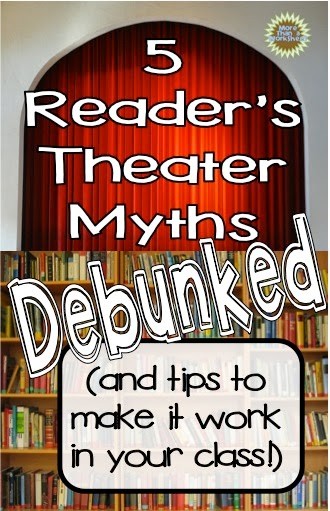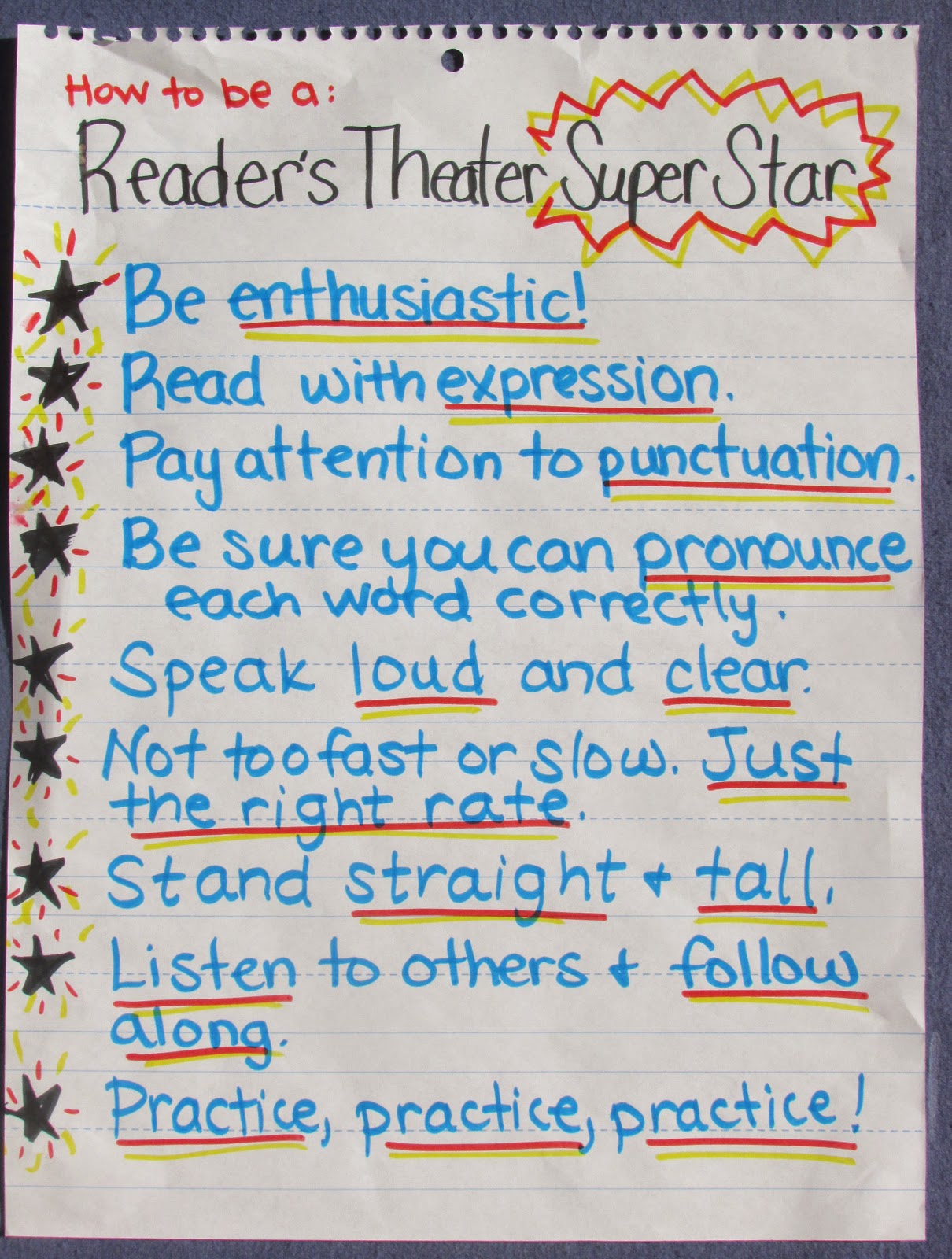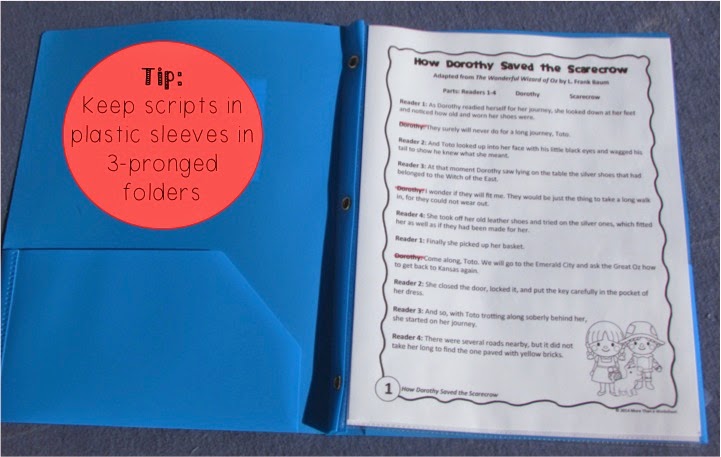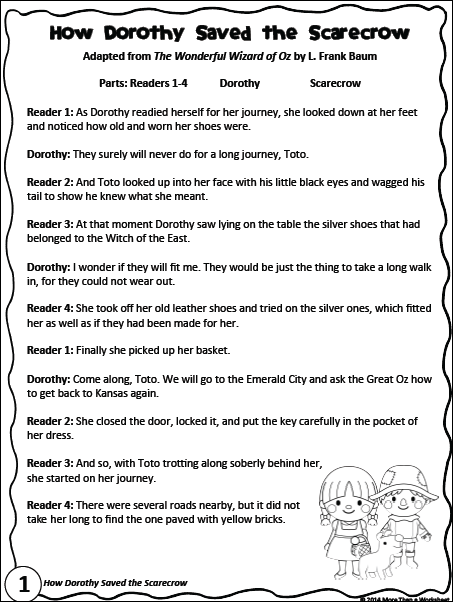 Guest post by Sarah Wiggins
Guest post by Sarah Wiggins
I first heard about reader’s theater in college and thought, “How fun! I will definitely do that when I have a class of my own.” When I did get my very own classroom, however, I was overwhelmed with everything that I was supposed to fit into my reading block. How could I possibly add one more thing? In my mind, I had made it this giant production that required tons of time and involved massive preparation including sets, costumes, and tense practice sessions. I soon realized I had been thinking of reader’s theater all wrong and letting the misconceptions prevent me from utilizing a valuable teaching tool.
Maybe you have believed some of these misconceptions, too, and my goal is to help debunk the myths.
MYTH #1—Reader’s theater must be a big production.
TRUTH: You can make reader’s theater as big or as small as you want it. You don’t have to have props, sets, or any of that. The fact that it is divided into parts is special enough.
Try This:
- Just print the scripts and go.
- Have students sit in their chairs in a circle with everyone’s kneesfacing the center, no need for “places” or acting, just reading.
- If you do want to go all out, wait until the last week of school or theweek before winter break. Divide students into groups, and put them in charge of producing a play. Hey, that energy has to go somewhere.
MYTH #2—Reader’s theater takes too much time.
TRUTH: Reader’s theater doesn’t have to require a huge time commitment. Carve out 15-20 minutes when you can.
Try This:
- Pass out a script after the test on Friday or in place of a textbook storyone day.
- Try finding scripts that match up with your social studies or sciencestandards, and do reader’s theater during those times.
- Pack up a few minutes early, and let students practice their scriptsuntil their bus is called.
- Do reader’s theater in lieu of morning work a few days a week. Justhave students come in and begin working on a script instead of completing a worksheet.
- Use it as a literacy center with a new script each week.
MYTH #3—Reader’s theater is just putting on a class play for fun.
TRUTH: Unlike doing a play, where the focus is the acting, reader’s theater focuses on reading. The repeated reading aloud enhances fluency and word recognition skills. Not to mention, it addresses the Common Core speaking and listening standards. Added bonuses are teamwork, cooperative learning, and problem solving skills.
Try This:
- Rather than reading a script as a whole class, divide your class into groups for reader’s theater. This way, each student gets more actual reading practice.
- Before beginning reader’s theater in your classroom, set guidelines for fluent reading practices and behavior so that students know this is not just playtime. You may even create an anchor chart with your students like the one below.

TRUTH: Initially, there is some work involved to get it going, but it will pay off in the end. Plus, you can re-use scripts from year to year.
Try This:
- Make 5 copies each time you get a new script. Print on the backs ofpages when possible.
- Highlight the parts ahead of time. If there are more than 5 parts,choose parts that have fewer lines and double them up. It’s ok for onestudent to read multiple parts.
- Keep the pre-highlighted scripts in plastic sleeves in a three-prongedfolder.
- Invite a trustworthy parent volunteer to do the highlighting andsetting up.
MYTH #5—Reader’s theater is just for little kids.
TRUTH: Reader’s theater can be adapted for students of all ages. Even “big kids” get excited when you break out a script.
Try This:
- Find engaging scripts on your students’ reading levels. Many scripts are based on well-known books. Look for high interest topics, popular characters, and higher-level vocabulary. You may even find scripts that address your content area topics.
Think you’re ready to give it a try? Here is a FREE script to get you started. How Dorothy Saved the Scarecrow is a four-page script for grades 3-5 based on a familiar chapter from The Wonderful Wizard of Oz by L. Frank Baum.
Don’t worry if it doesn’t go perfectly the first time. Just jump in and try it! See how it goes, and tweak it as needed. It will get easier each time as your students get accustomed to your expectations.
Sarah Wiggins has spent eight wild and crazy years in the classroom and believes learning is more than a worksheet. She is on a quest to help students think outside the box, and she likes to share creative, practical teaching ideas on her blog, Using My Teacher Voice.









